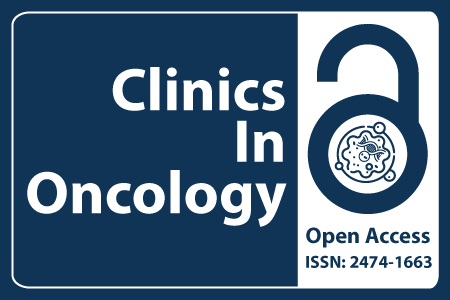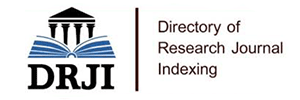
Journal Basic Info
**Impact Factor calculated based on Google Scholar Citations. Please contact us for any more details.Major Scope
- Blood Cancer
- Colon Cancer
- Urological Cancers
- Kidney Cancer
- General Oncology
- Hormone Therapy
- Colorectal Cancer
- Palliative Care
Abstract
Citation: Clin Oncol. 2019;4(1):1600.DOI: 10.25107/2474-1663.1600
Hepatic Arterial Infusion Chemotherapy vs. Transcatheter Arterial Embolization for Patients with Huge Unresectable Hepatocellular Carcinoma
Wei-Lun Tsai, Wei-Chi Sun, Chia-Ling Chiang, Huey-Shyan Lin, Huei-Lung Liang and Jin-Shiung Cheng
Department of Internal Medicine, Kaohsiung Veterans General Hospital, Taiwan
Depatment of Medicine, National Yang-Ming University, Taiwan
Department of Radiology, Kaohsiung Veterans General Hospital, Taiwan
Department of Nursing, Fooyin University, Taiwan
Depatment of Medicine, National Defense Medical Center, Taiwan
*Correspondance to: Jin-Shiung Cheng
PDF Full Text Research Article | Open Access
Abstract:
Objectives: For the treatment of huge unresectable Hepato Cellular Carcinoma (HCC), Transcatheter Arterial Chemo Embolization (TACE) or Transcatheter Arterial Embolization (TAE) generally had poor effects and high complication rates. Our previous study found that Hepatic Arterial Infusion Chemotherapy (HAIC) is a safe procedure and provides better survival than symptomatic treatment for the patients with huge unresectable HCC. The aim of the study is to compare the effect of HAIC versus TAE in patients with huge unresectable HCC.Patients and Materials: Since 2000 to 2005, patients with huge (size ≥ 8 cm) unresectable HCC were enrolled. Twenty-six patients received HAIC and 25 patients received TAE. Each patient in the HAIC group received 2.5 ± 1.4 (range: 1-6) courses of HAIC and in the TAE group received 1.8 ± 1.2 (range: 1-5) courses of TAE. Baseline characteristics and survival were compared between the HAIC and TAE group.Results: The HAIC group and the TAE group were similar in baseline characteristics and tumor stages. The overall survival rates at one and two years were 42% and 31% in the HAIC group and 28% and 24% in the TAE group. The patients in the HAIC group had higher overall survival than the TAE group (P=0.077). Cox-regression multivariate analysis revealed that HAIC is the significant factor associated with overall survival (relative risk: 0.461, 95% confidence interval: 0.218-0.852, P=0.027). No patients died of the complications of HAIC but three patients (12%) died of the complications of TAE.Conclusion: HAIC is a safe procedure and provides better survival than TAE for patients with huge unresectable HCCs.
Keywords:
Hepatocellular carcinoma; Chemotherapy; Huge; Unresectable
Cite the Article:
Tsai W-L, Sun W-C, Chiang C-L, Lin H-S, Liang H-L, Cheng J-S. Hepatic Arterial Infusion Chemotherapy vs. Transcatheter Arterial Embolization for Patients with Huge Unresectable Hepatocellular Carcinoma. Clin Oncol. 2019; 4: 1600.













